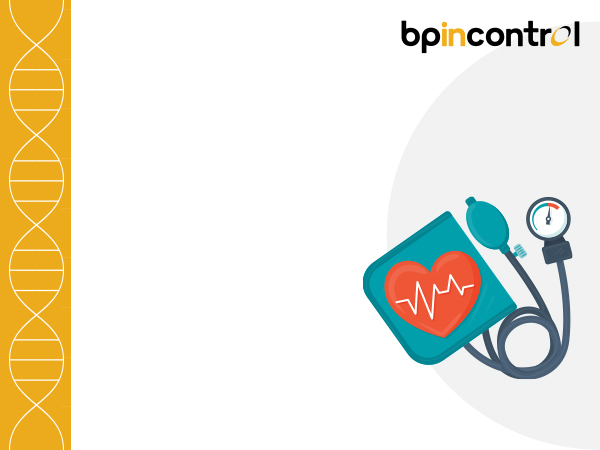Stages of Hypertension: Know Your Blood Pressure Status

Table of Contents
There are two types of hypertension identified as primary high blood pressure (which is not caused by other medical conditions) and secondary high blood pressure (caused by medical conditions such as kidney troubles, thyroid, sleep apnea, drugs, etc.) Though you may not know it, hypertension actually has stages. Here’s all you need to know about these stages:
What Are The Stages Of Hypertension?
There are four stages of hypertension or high blood pressure in adults:
STAGE 1: PREHYPERTENSION
- Mostly half the number of adults above the age of 18 are prehypertensive.
- Certain risk factors such as diabetes, high levels of bad cholesterol, and obesity are noticed more among people who have prehypertension than in people who have normal blood pressure.
- these risk factors increase the chances of people suffering from prehypertension, and of contracting cardiovascular troubles such as heart attacks or strokes.
- Prehypertension is not caused due to ageing. In populations where the intake of salt is minimal the occurrence of prehypertension, even among ageing people, is less.
- Prehypertension is an alarm that your body raises that you may be at risk of high blood pressure.
SOME CHANGES IN LIFRESTYLE SUCH AS
- Watching your weight.
- Regular exercise.
- Low sodium.
- A low-fat diet high in fruit.
- No smoking.
- Moderate to no consumption of alcohol can prevent prehypertension from converting into hypertension.
Where the systolic reading is in the range of 120 – 139 mm Hg and the diastolic reading is in the range of 80-89 mm Hg. Prehypertension is your body’s way of sending out a warning sign that, if neglected, you may develop high blood pressure in the future.
Brain Symptoms –
Heart Symptoms –
Most people with hypertension may not have any symptoms and therefore hypertension is termed as “silent killer”. If you feel doubts about having hypertension, DO NOT self-diagnose yourself. Get an opinion from your doctor.
STAGE 2: MILD HYPERTENSION
Stage 2 hypertension is called as Mild hypertension, or raised blood pressure. In case of mild hypertension, consistent blood pressure readings show the systolic reading in the range of 140 -159 mm Hg and the diastolic reading between 90 – 99 mm Hg. In this stage of high blood pressure, doctors may prescribe blood pressure medications and recommend lifestyle changes.
- Almost 40% of adults in the world have high blood pressure and roughly half of them have mild hypertension.
- Although some studies suggest that treating mild high blood pressure has unclear benefits, more than 50% of people suffering from mild hypertension take treatments.
- Treatments may not lower the risk of cardiovascular diseases and other health problems.
- Before starting any medications or treatments for mild hypertension, get multiple blood pressure readings to make sure that the readings.
- A change to a healthier lifestyle, such as staying fit, eating healthy (low salt intake), sleeping well, avoiding alcohol and smoking etc. will be beneficial in helping lower blood pressure.
STAGE 3: MODERATE HYPERTENSION
Stage 3 hypertension is called moderate hypertension where the systolic reading is in the range of 160 – 179 mm Hg and the diastolic reading is in the range of 100-109 mm Hg. In case of these blood pressure readings, doctors will prescribe medications and insist on rapid lifestyle changes.
Since 2017, the American Heart Association and the American Stroke Association has recommended guidelines to define normal and high blood pressure.
-
Normal:
120/80 mm Hg is the normal range. Just follow heart healthy habits such as a balanced diet and regular exercise.
-
Elevated:
When blood pressure readings are consistently from 120-129 systolic and less than 80 mm Hg diastolic. People with these readings are more likely to develop high blood pressure and need to take measures to control the condition.
-
Hypertension Stage 1:
When blood pressure consistently ranges from 130-139 systolic or 80-89 mm Hg diastolic. More risk of cardiovascular diseases. For patients with these readings, doctors will recommend a lifestyle changes and may consider blood pressure medications.
-
Hypertension Stage 2:
When blood pressure consistently ranges at 140/90 mm Hg or higher. For patients with these readings, doctors are likely to prescribe a combination of blood pressure medications and healthier lifestyle changes.
-
Hypertensive crisis:
When the blood pressure reading suddenly exceed 180/120 mm Hg it requires speedy medical attention. If any chest pain, change in vision, shortness of breath, back pain, numbness/weakness is experienced, don’t wait for the blood pressure to come down, seek medical help immediately.
| Blood Pressure Category | Systolic mm Hg(Upper Number) | Diastolic mm Hg(Lower Number) | |
| Normal | Less than 120 | and | Less than 80 |
| Elevated | 120-129 | and | Less than 80 |
| High Blood Pressure(Hypertension) Stage 1 | 130-139 | or | 80-89 |
| High Blood Pressure(Hypertension) Stage 2 | 140 or Higher | or | 90 or Higher |
| Hypertensive Crisis(Consult your Doctor immediately) | Higher than 180 | and/or | Higher than 120 |
STAGE 4: SEVERE HYPERTENSION
- In case of a hypertensive crisis, a severe increase in blood pressure can inflame blood vessels, restricting the ability of the heart to pump effectively.
- Hypertensive crisis can be an urgent hypertensive crisis where the blood pressure is extremely high but the doctor does not suspect organ damage.
- Hypertensive crisis can be an emergency hypertensive crisis where the blood pressure is extremely high and has caused damage to organs and can cause life-threatening.
- Signs and symptoms of a hypertensive crisis may include severe chest plain, blurred vision, severe headaches, seizures, shortness of breath, nausea/vomiting, severe anxiety etc.
- If there is a severe increase in the blood pressure, seek medical help immediately without waiting for the blood pressure to come down.
Uncontrolled high blood pressure is dangerous and may increase the risk of heart attack, stroke, and kidney failure which may even prove fatal. Some studies suggest that the risk of dying of a heart attack is directly linked to high blood pressure, particularly systolic hypertension. The higher your blood pressure, the higher the risk.
Thus, it is important to keep hypertension in control to decrease the risk of heart attack and stroke. Getting your blood pressure checked regularly, and monitored by your doctor, is important in helping keep the blood pressure in a normal range. A diagnosis of high blood pressure (similarly, any unusually low blood pressure readings must also be evaluated by a medical practitioner) must be confirmed with a medical professional.
Note of caution: This article is for information purpose only. Always consult your doctor before altering any diet plans, medications or in case of any other blood pressure related troubles.
REFERENCES :
Disclaimer
The information contained in this article is to educate, spread awareness in relation to hypertension and other diseases to the public at large. The contents of this article are created and developed by BPinControl.in through its authors, which has necessary, authorisations, license, approvals, permits etc to allow usage of this articles on The Website. The views and opinions expressed in this article are views, opinions of the respective authors and are independently endorsed by doctors. Although great care has been taken in compiling and checking the information in this article, The Website shall not be responsible, or in any way liable for any errors, omissions or inaccuracies in this article whether arising from negligence or otherwise, or for any consequences arising therefrom. The content of this article is not a substitute for any medical advice. The Website shall not be held responsible or liable for any consequence arising out of reliance on the information provided in the article.

 Weakness icon
Weakness icon Fatigue icon
Fatigue icon Shortness of breath (breathlessness) icon
Shortness of breath (breathlessness) icon
Comments (3)
Ganpat Lal Chittara
Very useful information to increase awareness.
Yogesh Mohan Verma
Favourable information
Ramesh
Good information.
Add your comment